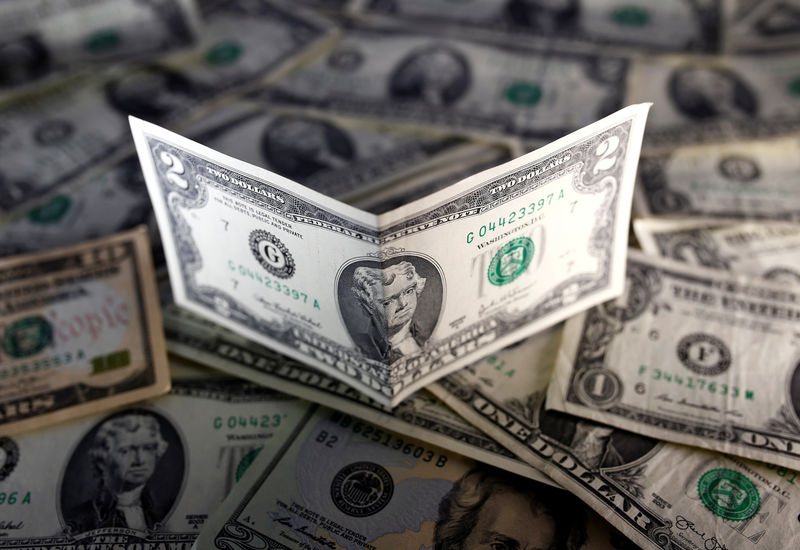Investing.com - The dollar was trading near one-and-a-half week highs against a currency basket on Wednesday, as safe haven demand continued to be underpinned persistent concerns over trade tensions and emerging market stresses.
The U.S. dollar index, which measures the greenback’s strength against a basket of six major currencies, was up 0.17% to 95.59 by 04:01 AM ET (08:01 GMT), not far from Tuesday’s one-and-a-half week highs of 95.68.
Demand for the dollar was bolstered by the risk-off mood in markets amid fears over the impact on global growth from the Trump administration’s protectionist trade policies and strains in emerging markets.
U.S. President Donald Trump could slap tariffs on an additional $200 billion worth of imports from China as soon as Thursday, which would ratchet up the trade row with Beijing.
Data overnight showed that business activity in China slowed in August, indicating that the trade dispute with the U.S. is hitting demand.
Trade talks between the U.S. and Canada were due to resume later Wednesday, with Trump threatening to leave Canada out of a new deal already negotiated with Mexico.
The dollar was almost unchanged against the yen, with USD/JPY last at 111.49.
The euro was lower against the firmer dollar, with EUR/USD down 0.2% to 1.1557.
The pound was also pressured lower, with GBP/USD sliding 0.3% to 1.2816 as worries over the prospect of a no-deal Brexit continued to weigh.
The Australian dollar was lower, with AUD/USD down 0.28% to 0.7156 despite data overnight showing that the country’s economy grew at the fastest pace in six years in the second quarter.
In emerging markets, Turkey’s lira was pressured lower amid lingering concerns over the country’s economic and currency crisis.
Deteriorating relations between the U.S. and Ankara and worries about Erdogan's increasing control over monetary policy and the economy have seen the lira tumble more than 40% this year.
Argentina’s peso also fell, re-approaching record lows against the dollar as the country’s government scrambled to deal with a fresh economic crisis.
Emerging market currencies have been hard hit by concerns that higher U.S. interest rates will pressure countries that have borrowed heavily in dollars in recent years.
